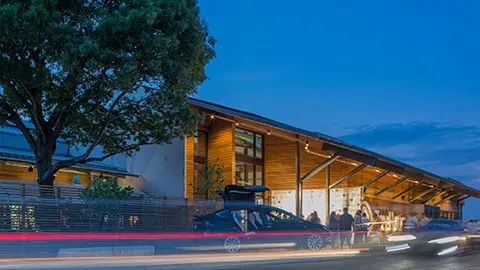Growing EV Sales Increases Charging Demand
In July 2023, one in four new cars sold in California, and roughly one in 10 cars sold in the U.S., were EVs. With federal legislation pushing manufacturers towards electric power, the number of models to choose from has never been greater, with EV options at every price point and in many different formats. Electric cars are now in the mainstream – meaning they are well past the early adopters who might have been willing to accept compromises with the charging experience.

Why Public EV Charging Matters
EV shoppers now want the convenience of charging wherever they want, whenever they want. Studies from J.D. Power and others are showing that an increasing number of those considering EVs are not making the switch because of concerns about charging infrastructure. Many of us live in shared accommodations where installing a home charger might be challenging; and many more of us regularly drive long distances where charging on the road would be a necessity. Fortunately, the latest survey from the Department of Energy (DOE) shows that EV charging infrastructure continues to rapidly grow. In fact, at the end of the first quarter of 2023, there were over 68,000 charging locations in the U.S., with over 140,000 charging ports. That’s double the number that the DOE reported at the end of 2019.
In just the first three months of the year, over 5,300 public charging ports were added across the country, a total of 4 percent, bringing the total number of public charging ports available to 141,907. The biggest increase in charging infrastructure was in the south-central region of the country, which had an almost 8 percent increase in the number of available public chargers – good news for those considering an EV who don’t live in traditional EV markets like California.

Ultra-Fast Chargers: Much More Available
Even better news is that the number of Level 3 fast chargers is increasing at almost double the overall rate. In the first quarter, the number of available Level 3 chargers increased by almost 8 percent. Overall, more than 20 percent of the 140,000-plus chargers now available to the public are fast chargers capable of between 24 kW and 350 kW, with 50-150 kW chargers the most common.
The fastest growth in Level 3 charging is in the 250-349 kW range – chargers that are fast enough to deliver a 10 to 80 percent charge in less than half an hour on a compatible EV. And that number is set to grow even more rapidly, thanks to announcements such as the one made by a consortium of vehicle manufacturers, promising 30,000 additional rapid charging ports in the next couple of years.

Millions of Home EV Chargers in America
These numbers, of course, do not include the millions of home chargers now installed across North America, which are the primary charging solution for the vast majority of EV owners. Home charging is the cheapest and most convenient option, allowing EV owners to totally avoid gas stations, and simply plug in overnight to have a full charge in the morning. Many home chargers, or vehicle-associated apps, allow you to program when the vehicle charges, to take advantage of off-peak rates for electricity. The DOE’s study also showed there were approximately 20,000 private charging points installed at workplaces, and for commercial and fleet use, across the U.S.
The upshot of this study? While public charging is still not as convenient as filling up with gasoline, infrastructure to support EVs is growing along with the growing number of EVs on the road. And while home charging will, and should still be, the first choice for anyone considering an EV, taking a long road trip, or making the switch to electric even if you can’t charge at home, will get easier and easier over time.













